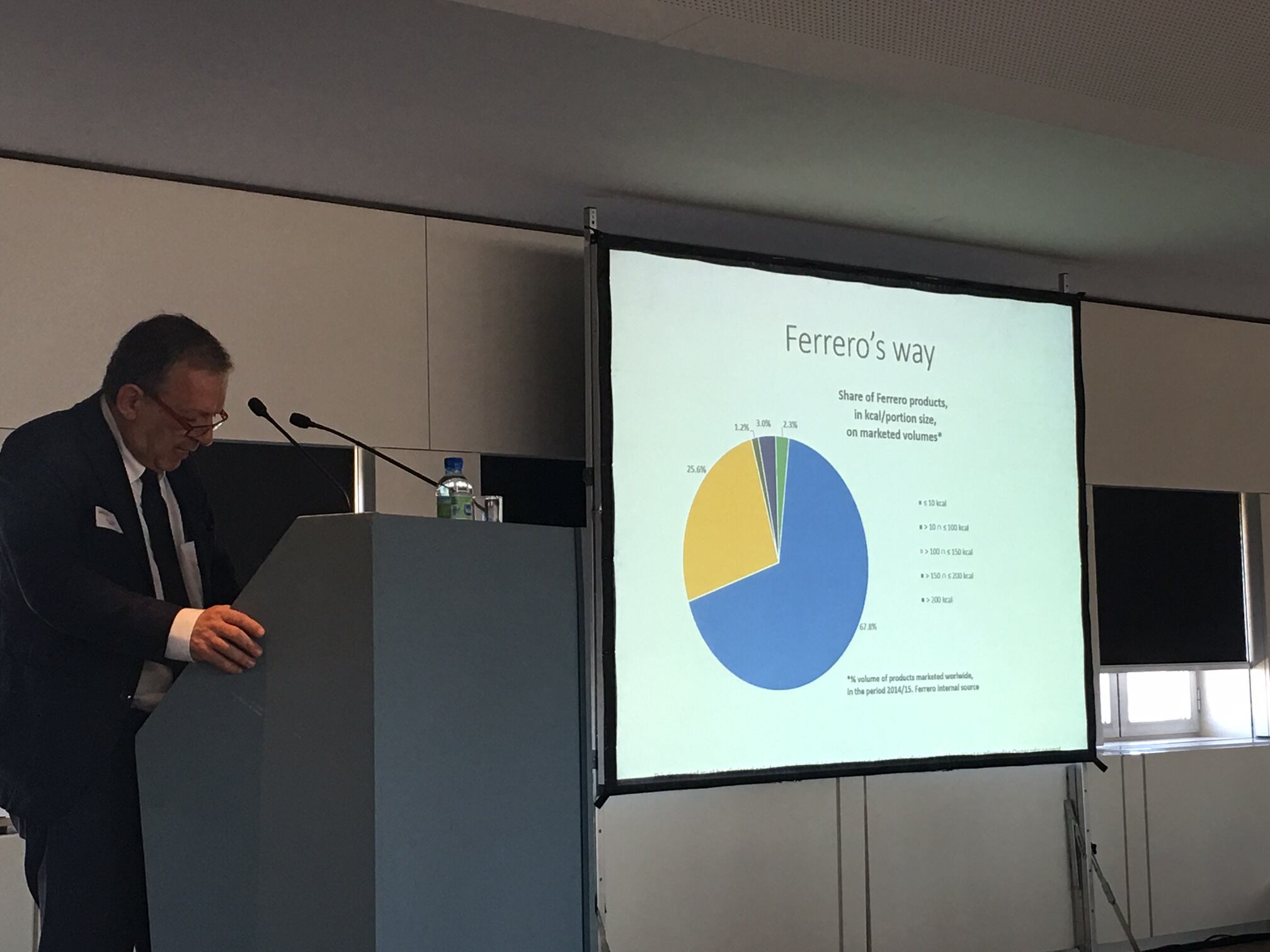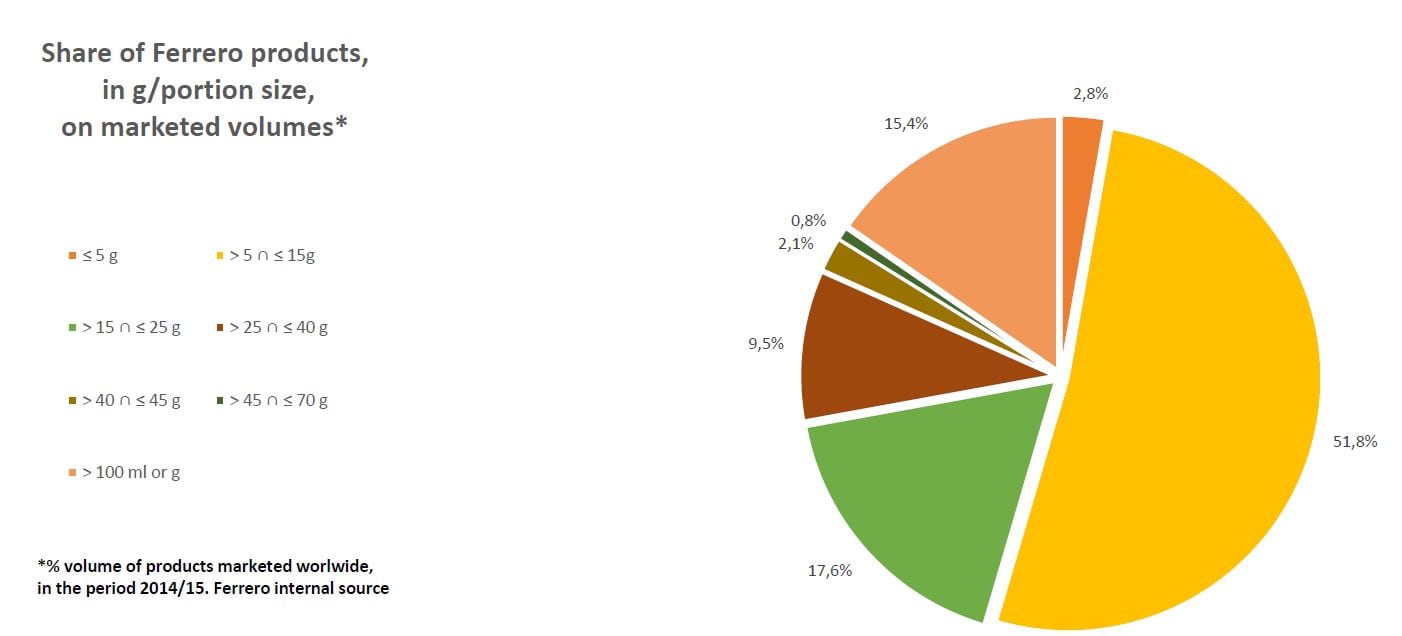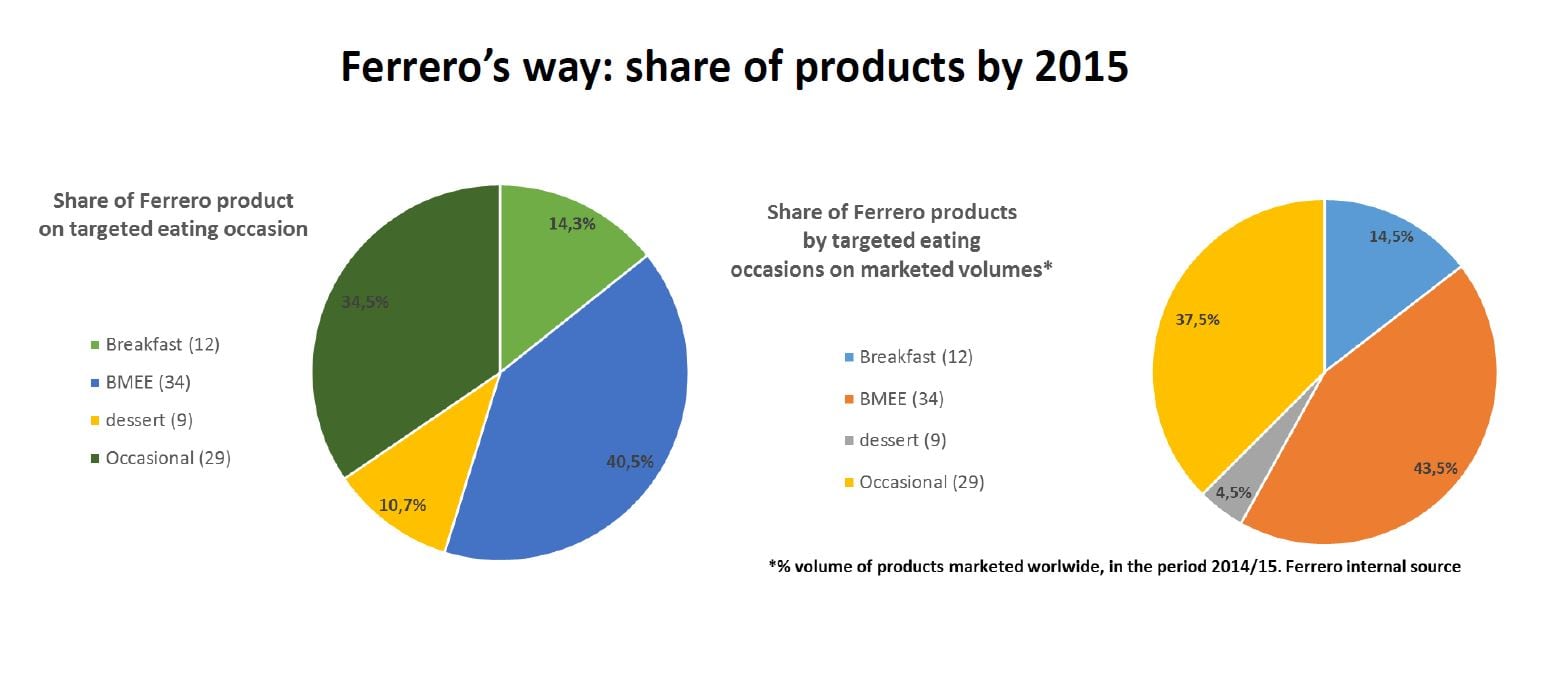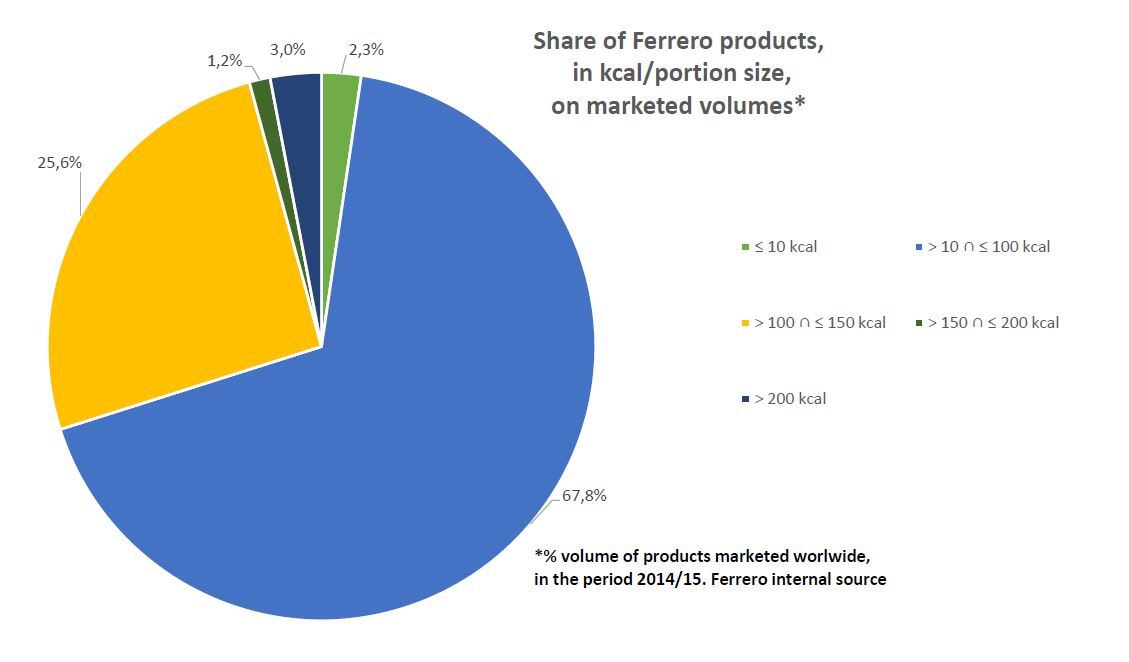It believes smaller confectionery portions linked to eating occasions in the day may help consumers feel fuller and contribute to controlling their calorie intake.
The company presented its nutrition strategy at European confectionery & biscuit association CAOBISCO’s annual meeting last month, hosted by ConfectioneryNews.
There, it said reformulating confectionery was difficult and cautioned against attacking a single nutrient such as sugar.
The company detailed how it will implement CAOBISCO’s strategy to address health & nutrition concerns, which gives members a 'Menu of Options' to help tackle Europe’s obesity crisis.

More calories in the diet
Roberto Menta, director of nutrition & sustainability at Ferrero's subsidiary Soremartec, said: “The forecast is that there will be an increase in calorie intake for the next 20 years of roughly 250-300 kcal per capita.
“So it will be very difficult to cope with the goal to reduce obesity unless we take into account the amount of calories we are eating."
Menta said obesity was a multifactor problem that could not be solved with one approach alone, but said: “The feeling of everybody is that we need in some way to address the problem of obesity through portion sizes.
"Portion size control is one of the most cost effective measures because it can be done in a fast way and carries very important results."
Smaller portions and calorie cap
The maker of Tic Tac, Kinder and Ferrero Rocher last year produced over 70% of products in portions of less than 25 g with less than 100 kcal per portion
Menta said Ferrero had also implemented a calorie cap on new products.
“It will be pretty unexpected in future that a new Ferrero product will be more than 150 kcal, unless it’s a special occasion,” he said.
"And there will be a guideline linked to the amount protein, sugar and fat inside the product,” he continued.
Ferrero’s latest CSR report says the company hopes to provide micronutrients in its confectionery products, not by adding them but by selecting raw materials that contain them naturally.

Eating occasions and glycaemic index
Ferrero has linked its smaller portion sizes to five snack and meal times throughout the day, which it claims allows for a greater satiety effect.
"More than 50% of our products are sold for breakfast and Between Meals Eating Episodes ‘BMEE',” said Menta.
“We want our product to be part of breakfast,” he continued. “But the final composition of the breakfast, we say, has to be between 1 and 1.5 energy density per gram with a glycemic index of less than 50 and providing an amount of calories according to the age.”

He said it was key to link confections to an eating episode during the day to ensure consumers feel fuller.
"For all products as a basis we define the glycemic impact of a product,” said the Ferrero health chief. "If you have a small portion there is a risk the small portion is used twice unless you have a satiety response to it.”
Almost half of Ferrero’s range had a ‘Low Glycemic Index’ and half had at least a ‘Medium Glycemic Index’ in 2015. Only 5% of products had a High Glycemic Index’.
The glycemic index (GI) ranks foods on a scale from 0 to 100 according to the extent they raise blood sugar levels after consumption.
Low-GI foods delay hunger and help control appetite due to their slow digestion and absorption, which produce gradual rather than steep rises in blood sugar and insulin, according to the University of Sydney.
What is a portion?
Menta was part of a panel discussion on portion control, chaired by this site, at the CAOBISCO meeting, along with representatives from Mondelēz and Nestlé.

Asked if consumers understood what a portion size is in confectionery, he said: "Not all...this is a very complicated matter. But by definition consumers identify chocolate as a high calorie food. They know if they eat chocolate there is sugar inside."
In the EU, manufacturers determine the portion size of products, unlike in the US where there are federal regulations detailing serving sizes by product type. In the US, all candy, except hard candies and marshmallows, have a serving size of 40 g.
Ferrero has different portion sizes depending on the product, but the bulk of its range has portions below 25 g with less than 100 kcal.
In 2015, its Kinder products were manufactured in individual portions weighing between 5 and 43 g.
“We believe that consumers need support [on portions] and we have to be ready to give them support with clear indications and clear labeling... But consumers themselves know that the product they are eating is high in calories and high in sugar and fat,” said Menta.
Marketing spend
ConfectioneryNews asked if Ferrero’s lower-calorie options enjoyed stronger marketing support than its higher calories products.
Other Ferrero health actions
- Stopped using hydrogenated fats in 2006.
- Voluntary front of pack labeling for all its eligible products in Europe.
- Part of the EU pledge on advertising to children.
- Expanding Kinder+Sport program to 30 countries worldwide and five million children by August 2018.
Menta suggested such an approach would have limited impact if consumers didn’t enjoy and buy the product.
Reformulation and attacking a single ingredient
He added it was “hard” to reformulate chocolate confectionery to contain less sugar and fat.
“From a technological point of view, the texture of the product is completely different and people simply don't like it and don’t buy it,” Menta said.
He added consumers frequently revert to old habits, making it difficult for new products to have a long-term positive effect on health.
“People will try a new product for three days and after three days they will go back to the old product,” he said.
Menta also cautioned attacking a single nutrient such as sugar to improve public health.
“History teaches us this is no way to find a solution, because a single ingredient is managed in a very different way for everybody,” he said. “Think about the story of saturated fat,” which was heavily criticized in the Eighties.
“Nowadays it's clear there is no relationship between cardiovascular disease and saturated fat on a long-term basis,” he said.
Diverse cultures

Ferrero’s Roberto Menta said cultural diversity within Europe posed a great challenge to confectioners’ efforts to address health as he predicts tastes will change dramatically and very quickly in the coming years. “In Europe, the problem is in 20 years’ time we will have people from different cultures being a high percentage of our society… we will be faced with different tastes from the consumer in a short time. Millennials will change the horizons of our beliefs and our faith in what was established in the past.”
